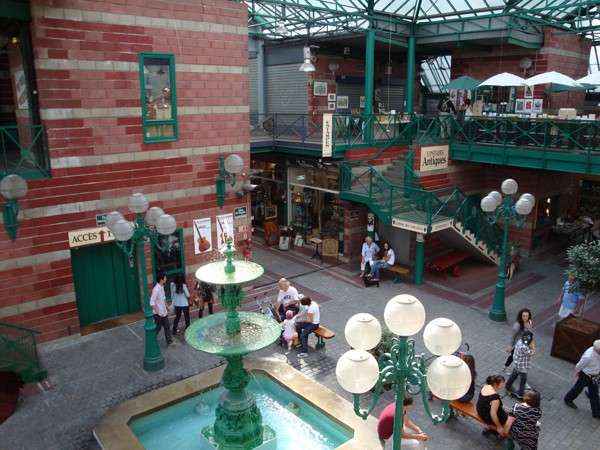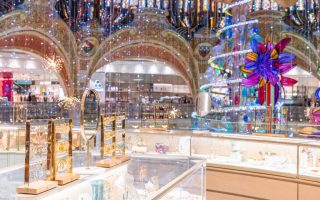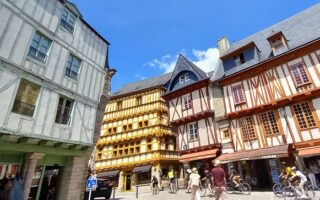Paris Flea Markets

Starting in the Gallo-Roman era, Paris was enclosed by a succession of fortified walls, extended as the city grew, and punctuated by portes, the city gates. The last of the walls came down in 1919, but the portes remained, in spirit at least, for the most part marking the city limits and the start of suburban communities.
In the late 19th century, not that long before the walls were razed, beggars and drifters were chased out of town by city ordinance, and so were the chiffonniers, or ragpickers, who scoured the streets by night scavenging discarded goods to sell by day. They were known as biffins (foot-soldiers) or crocheteurs—either a porter who carries heavy goods on crochets (hooks), or a lock picker, possibly indicating that some of the scavenged goods had not yet been discarded. They were also called pêcheurs de lune, or fishermen of the moon.
Ousted, they began to congregate just beyond the fortifications, near the portes of Montreuil, Vanves and Clignancourt, to sell their ragged wares, and gradually the flea markets took shape. The “flea” tag may have come from the scruffy condition of sellers and stuff, but the semi-official story goes that an observer, looking down from the heights of the fortifications, saw the tiny figures far below as flea-sized. Either way, the name stuck, and eventually the markets became popular—even fashionable—spots for weekend chineurs (bargain hunters) out to fouiner (nose around) for antiques and brocante (bric-a-brac).
SAINT-OUEN
The granddaddy of them all is the huge market just outside the city in the small community of Saint-Ouen, between the Porte de Saint-Ouen and the Porte de Clignancourt. Cleaned up and licensed in 1885, it’s officially the Marché aux Puces de Saint-Ouen, but it’s often called just “Clignancourt”, partly because that’s the nearest Métro stop, at the end of line 4.
It’s virtually a village unto itself, covering some 17 acres, and it claims to be the largest antiques and bric-a-brac market in the world. En route from the Clignancourt station, scores of stands offering cheap new clothing, military surplus, shoes, sunglasses and leather goods form a crowded, bargain-filled, hang-onto-your-wallet gauntlet that must be run. But you can dodge it, by taking line 13 to the Garibaldi stop, on the far side of the market.
The flea market’s main street, the rue des Rosiers, and the smaller streets that form the big market’s grid are sometimes called rues pucières—a pretty bad pun on poussière, or dust. Within the grid, some 2,500 antique and brocante dealers are grouped into 15 separate markets—some large, some small, each with its own distinct layout and character. Prices are negotiable everywhere.
More than a dozen cafés and bistrots are scattered around, too, including the venerable Chez Louisette. Opened in the 1930s, it’s now an institution, with accordions and Edith Piaf-style singers. The food is edible, the time warp irresistible.
Also back in the 1930s, gypsies were among the market’s regular denizens—they re-caned chairs and played guitar in the nascent style of Django Reinhardt, and still today several cafés offer Sunday concerts of very good, Reinhardt-style jazz manouche, or gypsy jazz.
Among the best markets at Saint-Ouen:
Vernaison
The first market along the rue des Rosiers is Vernaison, opened in 1920 by Romain Vernaison, who turned part of his vegetable garden into small stands rented to bric-a-brac dealers. It’s the oldest and still the most emblematic of the Saint-Ouen markets—a labyrinth of small alleys with an amazing diversity of merchandise, from good second-hand furniture, especially provincial and country-style, to crystal and china, toys, books, old linens, postcards, and bangles and beads for stringing. Prices are just as varied, but larger pieces are not cheap. Follow the sound of music to Chez Louisette at the far end of Allée 1.
Malassis and Dauphine
Across the street are two more recent, covered markets. The Marché Malassis, in a two-story building inspired by a 1930s ocean liner and dotted with open-air patios, offers high quality Art Deco furnishings, along with restored 18th- and 19th-century furniture and Oriental antiques. The two-story Marché Dauphine, beneath a greenhouse roof, is the largest market within Saint-Ouen, with 130 stands displaying classic antiques from the late medieval Haute Epoque to 20th-century Art Deco and design, along with rugs, jewelry, clocks and watches. Upstairs, scattered shops offer vintage clothes, books, postcards and restorers at work.
Biron
Decidedly upmarket, with two neat lanes of glass-fronted shops filled with 17th- to 20th-century antique furnishings, paintings, chandeliers and sconces, framed mirrors, porcelain and ornamental statuary. Lots of gold and silver gilt here, and glittery prices to match.
Serpette and Paul Bert
The indoor Marché Serpette is bordered on two sides by the outdoor Marché Paul Bert, both bought in 2005 by England’s Duke of Westminster, a major international property developer, who has been in conflict with the market’s dealers ever since. The higher-priced Serpette, installed in a former Citroën garage in the 1970s, is concentrated on restored, good quality 19th- and 20th-century furnishings, art works and objets d’art. The trendy L-shaped Paul Bert, dating to 1945, has some 200 charming cottage-like stands, often blooming with greenery, and a varied mix of antiques and 20th-century industrial design pieces, bistrot furnishings and garden ornaments, some restored or in good condition, most sold as is. A favorite of professional decorators.
Jules Vallès
The oldest of the indoor markets, a true granny’s attic with two alleys of stands and a hodge-podge of bric-a-brac in varied states of disrepair—posters, cookware, military mementos, toys, curios—the kind of challenge dedicated chineurs love.
Rue des Rosiers (corner of Avenue Michelet and rue Jean Henri Fabre), Saint-Ouen, Métro: Porte de Clignancourt or Garibaldi. Open Sat 9 am–6 pm; Sun 10 am–6 pm, Mon 11 am–5 pm. website
VANVES
Many Parisian amateur antique hunters say that their favorite weekend haunt is the Marché aux Puces de la Porte de Vanves, much smaller and easier to handle than the immense Clignancourt. Located just inside the city limits in the 14th arrondissement, the Vanves market stretches out along the intersecting avenues Marc Sangnier and Georges Lafenestre, and a first once-over stroll-through takes only a little more than an hour or so, leaving plenty of time to return to stands that pique your interest.
The market is all open-air, so many dealers shelter from sun or drizzle under big, square market umbrellas. The assortment of merchandise on display—laid out on trestle tables, card tables, upturned crates, in boxes or just spread on the sidewalk— can be startling. Spotted during only the first few minutes of a recent foray: an old wooden child’s sled, a marble-topped bistrot table, four Louis XVI-style chairs, painted-metal toy train cars, a polished wooden flute in its velvet-lined case, a black lace fan, a pair of leather-upholstered Eames chairs, a cluster of knee-high plaster garden gnomes, vintage bras dangling on a fence, two windup Duracell bunnies with drums, an array of engraved crystal wine glasses, several pairs of used kids’ Crocs, and a not-bad painting that might have been a copy of a Van Gogh.
The dealers, all professionals, are usually in the same spots every weekend, although the haphazard layout of each stand changes each time the wares are unpacked from the vans along the curb, so it’s often hard to recognize stands from one visit to the next. On a Sunday, searching in vain for the landmark feature of a stand you saw on Saturday, it’s hard to believe that someone actually bought the life-sized wax figure of Dracula in the interim, but that’s just part of the game. The condition of the merchandise varies, but almost nothing here is repaired or restored. Prices are quite a bit lower at Vanves, and they are still negotiable.
Avenue Marc Sangnier and Avenue Georges Lafenestre, 14th, Métro: Porte de Vanves; Tramway: Didot. Open all year Sat/Sun 7 am–1 pm; on Sun, separate market for new clothing, shoes, leather goods and sundries on Avenue Marc Sangnier, 2 pm–7:30 pm
Originally published in the September 2010 issue of France Today
Share to: Facebook Twitter LinkedIn Email
Leave a reply
Your email address will not be published. Required fields are marked *



